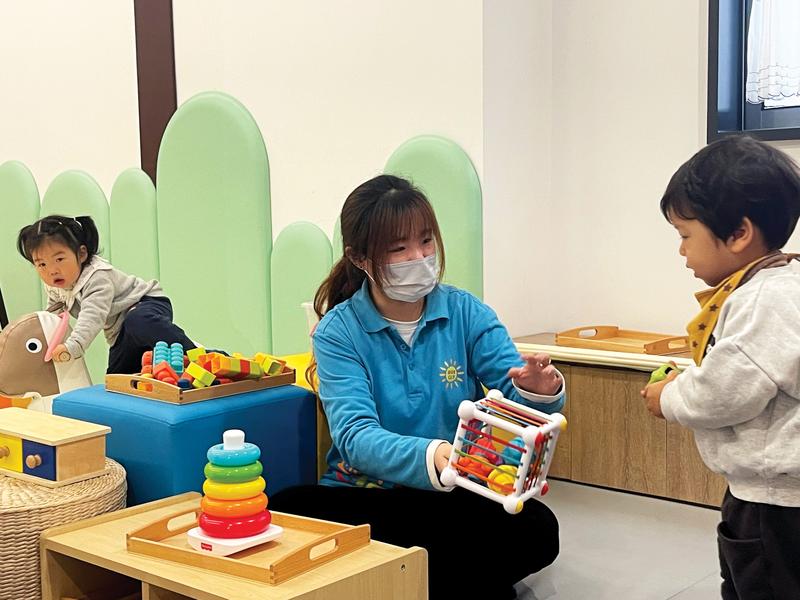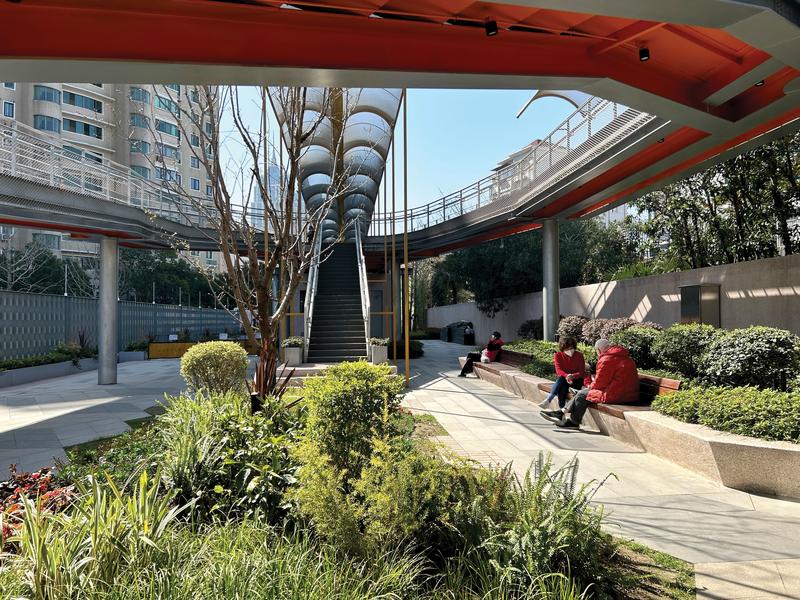Shanghai offers residents access to services, leisure spaces, wins acclaim
 Children play in the baby care facility run by the Jiangning Road sub-district government in Shanghai’s Jing’an district. (PHOTO PROVIDED TO CHINA DAILY)
Children play in the baby care facility run by the Jiangning Road sub-district government in Shanghai’s Jing’an district. (PHOTO PROVIDED TO CHINA DAILY)
Liu Jin is a Shanghai retiree in her 60s who lives in the city’s downtown Jing’an district. Until recently, Liu had to bring her 2-year-old grandson along whenever she had to go for her regular health check-up at a hospital.
But the recent introduction of a baby care facility in the Jiangning Road sub-district near her home has made life much easier. Unlike conventional childcare centers, this government-run facility offers care services in three-hour blocks, making it the ideal solution for people like Liu. What is more, the first 12 sessions are free.
Since it started operating last September, the baby care facility, which was part of Jiangning Road sub-district’s “map of happiness” project, has always been fully booked.
The sub-district government has launched the “map of happiness” project as part of its efforts to build a “15-minute community life circle” — a concept which aims to provide services related to living, working, studying, traveling and elderly care within a 15-minute walk for every resident.
Shanghai initiated the concept in 2014 and has since 2019 started to pilot the program in its urban areas. According to the city’s master plan, authorities are aiming to make such community life circles accessible to 99 percent of the population by 2035.
According to the Shanghai Urban Planning and Natural Resources Bureau, the city has a comprehensive action plan with hundreds of projects related to 15-minute community life circles.
As of 2021, more than 180 projects have been completed and they have effectively improved the community environment and services, Xu Yisong, the former director of the bureau, said during the 2021 Shanghai Urban Space Art Season which was themed on such circles.
The “map of happiness” project of the Jiangning Road sub-district is one recent example. Yu Wenjun, director of the government office of the sub-district, said the office has literally drawn a map on which community services that residents have requested for are noted.
“Based on our surveys, we found that many grandparents have their hands tied taking care of their grandchildren. As such, they barely have time to get a haircut or to see a doctor,” Yu said.
“We also found that the demand for short-term babysitting services has been high. This was why we decided to introduce a childcare facility. We have already added three baby care centers to this ‘map of happiness’, and we plan to have another three in the near future.”
To minimize set-up costs, most of the new baby care centers are located within facilities such as a community service center, a community elderly care center and a kindergarten, Yu added.
This year the sub-district will also add more public services to the map, which include a 24-hour printing service point and several community-based mini-daycare centers for the elderly, according to Yu.
“The map gives us a guide to ensure the daily needs of local residents are met at their door step,” she said. “It is a map to help build a complete community.”
The creation of 15-minute community life circles also involves major urban planning projects, such as expanding the city’s public transportation system so that residents can get around more conveniently. Efforts to do so have made Shanghai home to the world’s largest subway network that spans a whopping 831 kilometers. Today, residents in every part of the megacity can access a subway station within a 15-minute walk.
 Residents of Caoyang community in Shanghai’s Putuo district enjoy leisure activities in Centennial Park. (LIN SHUJUAN / CHINA DAILY)
Residents of Caoyang community in Shanghai’s Putuo district enjoy leisure activities in Centennial Park. (LIN SHUJUAN / CHINA DAILY)
The city has also since last year launched a project to increase its green spaces and the number of parks to 1,000 by the end of 2025. The project includes the construction of about 300 “pocket parks” — small gardens and green areas located at street corners, industrial zones and between apartment complexes.
Other green public spaces that have mushroomed in Shanghai over the past five years include those at the waterfront areas of Shanghai’s two major rivers, Suzhou Creek and Huangpu River.
“The improvements to the environment have been obvious,” said Guan Wenqin, a 35-year-old who works in an office building in Jing’an district. “Shanghai is really quick in delivering on what it promises.”
Guan, who has a degree in architecture, noted that she is most impressed by the city’s urban renewal projects which have greatly improved both the city image and the living environment of local communities.
“Out of personal interest, I would visit some of these projects during my lunch break, and it’s really inspiring to see the transformation they have brought,” she added.
One of these projects is Centennial Park in the Caoyang community in Putuo district. Caoyang, known as China’s first worker’s community, was one of Shanghai’s first communities to launch the “15-minute community life circle” program. Most of the buildings in the community were built in the 1950s and nearly half of its residents are aged above 60.
Centennial Park, which was redeveloped from the Caoyang Railway Wet Market — a long and narrow market which used to be a major source of waste and noise pollution — has since become a showpiece of the community’s transformation. Stretching a kilometer between Caoyang Road and Zhongshan North Road, the park now serves as the community’s public space for arts, leisure and sports.
Exhibitions, salons, sports and art installations are regularly held at the park to enrich the lives of residents. A basketball court and service station have also been built underground to make up for the shortage of activity space in the neighborhood.
Since its completion in 2021, the park has not only been popular among local residents, but also with tourists and urban designers from home and abroad.
Javier Moran, an undergraduate from Spain who majors in architecture and is currently undertaking a six-month exchange program at Tongji University, said he has heard so much about the park that it is now atop the list of his must-visit projects in Shanghai.
“It is really impressive to see how much benefit the park has brought to the community,” said the 23-year-old.
Cecilia Andersson, chief of the Planning, Finance and Economy Section of the United Nations Human Settlements Program, said Shanghai’s approach to building the 15-minute community life circles has raised awareness on the importance of collaboration, participation and communal cohesion among residents.
Based on Shanghai’s practice, China’s Ministry of Natural Resources released on July 1, 2021, a guide on community life circle planning and pledged that this concept would be promoted nationwide.
As of the end of 2021, more than 50 Chinese cities have followed Shanghai’s initiative to develop such circles.


